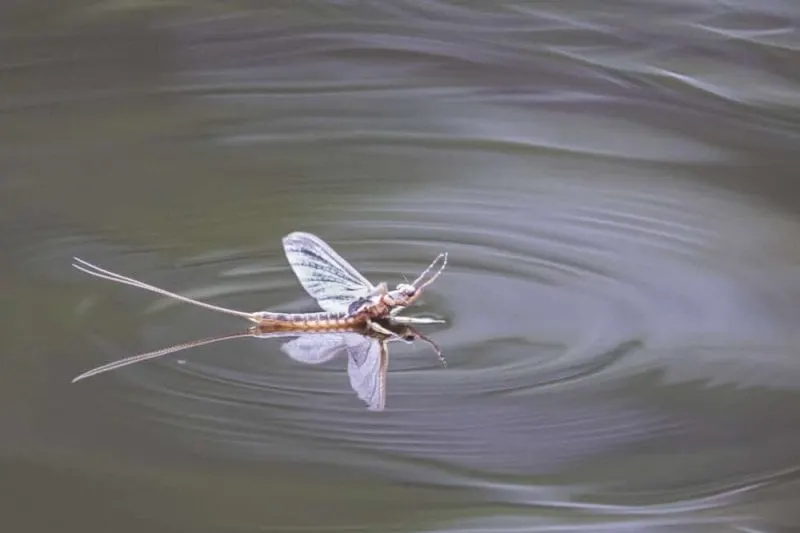Changing course, Health Canada finds neonicotinoid pesticides ‘not a threat’ to aquatic insects
Changing course, Health Canada finds neonicotinoid pesticides ‘not a threat’ to aquatic insects


In 2018, Health Canada proposed to phase out all agricultural uses of thiamethoxam, a Syngenta product, and clothianidin, a Bayer insecticide.
Neonics, as they are known, are widely used in Canadian agriculture. They are applied as a seed treatment to most of the corn and canola seeds in Canada, and a portion of the soybean seeds. They are also applied to fruit, vegetables and berry crops.
…
In the summer of 2018, department scientists said the insecticides were accumulating in ponds, creeks and other water bodies near agricultural land. The concentrations of neonics were harmful to midges and mayflies and therefore posed a threat to the birds and other animals that rely on the insects for food.
The Canadian Canola Growers Association and Alberta Agriculture collected and analyzed water samples near canola fields in Western Canada to test the ponds, creeks and water bodies for the presence of neonics.
Both groups found tiny concentrations of neonics at levels below the threshold of risk to aquatic insects.
[Health Canada’s Pest Management Regulatory Agency] incorporated the results into its decision.
“Based on these data it was determined that the risks to aquatic invertebrates resulting from chronic exposure following application of clothianidin under certain currently registered conditions are acceptable.”
Health Canada scientists came to the same conclusion about thiamethoxam.
Read the original post

 | Videos | More... |

Video: Nuclear energy will destroy us? Global warming is an existential threat? Chemicals are massacring bees? Donate to the Green Industrial Complex!
 | Bees & Pollinators | More... |

GLP podcast: Science journalism is a mess. Here’s how to fix it

Mosquito massacre: Can we safely tackle malaria with a CRISPR gene drive?

Are we facing an ‘Insect Apocalypse’ caused by ‘intensive, industrial’ farming and agricultural chemicals? The media say yes; Science says ‘no’
 | Infographics | More... |

Infographic: Global regulatory and health research agencies on whether glyphosate causes cancer
 | GMO FAQs | More... |

Why is there controversy over GMO foods but not GMO drugs?

How are GMOs labeled around the world?

How does genetic engineering differ from conventional breeding?
 | GLP Profiles | More... |

Alex Jones: Right-wing conspiracy theorist stokes fear of GMOs, pesticides to sell ‘health supplements’




 Trust issues: What happens when therapists use ChatGPT?
Trust issues: What happens when therapists use ChatGPT? Fighting deforestation with CO2: Biotechnology breakthrough creates sustainable palm oil alternative for cosmetics
Fighting deforestation with CO2: Biotechnology breakthrough creates sustainable palm oil alternative for cosmetics California, Washington, Oregon forge immunization alliance to safeguard vaccine access against federal undermining
California, Washington, Oregon forge immunization alliance to safeguard vaccine access against federal undermining Viewpoint — Fact checking MAHA mythmakers: How wellness influencers and RFK, Jr. undermine American science and health
Viewpoint — Fact checking MAHA mythmakers: How wellness influencers and RFK, Jr. undermine American science and health 30-year-old tomato line shows genetic resistance to devastating virus
30-year-old tomato line shows genetic resistance to devastating virus Viewpoint: Video — Big Solar is gobbling up productive agricultural land and hurting farmers yet providing little energy or sustainabilty gains
Viewpoint: Video — Big Solar is gobbling up productive agricultural land and hurting farmers yet providing little energy or sustainabilty gains The free-range chicken dilemma: Better for birds, but with substantial costs
The free-range chicken dilemma: Better for birds, but with substantial costs ‘You have to treat the brain first’: Rethinking chronic pain with Sanjay Gupta
‘You have to treat the brain first’: Rethinking chronic pain with Sanjay Gupta
